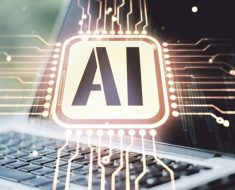Artificial Intelligence (AI) has made significant strides over the past few decades, revolutionizing various aspects of our daily lives. From voice assistants like Siri and Alexa to self-driving cars and sophisticated data analysis tools, AI’s presence is becoming increasingly ubiquitous. However, the AI that powers these technologies is predominantly narrow in scope, designed to perform specific tasks. This type of AI is known as Narrow AI. In contrast, Artificial General Intelligence (AGI) represents a more advanced and ambitious goal: creating machines that can understand, learn, and apply knowledge across a wide range of tasks, much like a human. But the question remains: Can machines ever truly think for themselves?
To appreciate the challenges and potential of AGI, it’s essential first to understand the limitations of Narrow AI. Narrow AI is characterized by its ability to perform a singular or limited range of tasks exceptionally well. For instance, your smartphone’s voice assistant can set reminders, answer factual questions, and even tell jokes. However, it cannot perform unrelated tasks like diagnosing medical conditions or composing a symphony. These AI systems operate within predefined parameters, excelling at specific functions but lacking the flexibility to generalize their knowledge to different domains.
AGI, on the other hand, aims to replicate the broad cognitive abilities of humans. An AGI system would need to exhibit capabilities such as reasoning, problem-solving, learning from experience, and adapting to new situations. Imagine a robot that can vacuum your house, cook dinner, compose music, and engage in philosophical discussions. This level of versatility and understanding is what AGI aspires to achieve.
The pursuit of AGI involves creating machines that can transfer learning from one context to another. For example, a machine that learns to play chess should ideally apply its problem-solving skills to other games like Go, without needing to be reprogrammed. This ability to generalize knowledge across different tasks is a hallmark of human intelligence and a significant challenge for current AI systems.
Despite rapid advancements in AI, achieving AGI remains a distant goal. Current AI systems are highly specialized and lack the ability to generalize knowledge. They are designed to excel in specific domains, but they struggle to perform tasks outside their programmed expertise. This limitation underscores the difference between Narrow AI and AGI.
Prominent AI researchers and experts acknowledge the complexity of developing AGI. According to experts, AGI requires a profound understanding of the world, far beyond the capabilities of current AI systems. It involves not just processing data but truly comprehending and interacting with the world.
One of the biggest challenges in achieving AGI is creating machines that can exhibit human-like reasoning and understanding. This involves developing algorithms that can not only process information but also derive meaningful insights and make decisions based on those insights. While machine learning and neural networks have made significant strides, replicating human cognition remains a formidable task.
Several projects and milestones in AI research provide insights into the potential of AGI. One of the most notable early examples is Google’s Deep Dream. This algorithm produces surreal, dream-like images by using neural networks to recognize and exaggerate patterns within images. The resulting visuals blend styles like Impressionism and Surrealism, offering a glimpse into the creative potential of AI.
Another groundbreaking project is “The Next Rembrandt.” This project utilized AI to analyze over 300 of Rembrandt’s works, studying his brushstrokes, composition, and subject matter. The AI then created a new painting that closely mimics the Dutch master’s style. This project sparks discussions about originality and authorship in art, pushing the boundaries of what AI can achieve.
Similarly, the “Portrait of Edmond de Belamy” by the Paris-based collective Obvious was created using a Generative Adversarial Network (GAN). This AI-generated artwork fetched an astonishing $432,500 at a Christie’s auction, marking a significant moment in the art world. The portrait’s blurred, unfinished quality challenges traditional notions of art and creativity, highlighting AI’s potential to innovate and disrupt.
AI’s influence extends beyond visual art to other creative domains such as music and literature. In the realm of music, projects like François Pachet’s “Flow Machines” analyze vast datasets to produce original compositions. These projects offer new avenues for musical exploration and demonstrate AI’s potential to contribute to creative processes.
In literature, we have “Sunspring,” a short sci-fi film entirely written by an AI language model. While the narrative might seem nonsensical at times, it showcases AI’s potential to contribute to screenwriting and creative writing. These examples illustrate the diverse applications of AI in the creative arts and highlight the potential for collaboration between human artists and AI systems.
One of the critical questions in the pursuit of AGI is whether machines can truly replace human artists. To answer this, we must consider the nature of creativity itself. Creativity involves generating new ideas, mimicking existing styles, and, most importantly, infusing work with emotion, intention, and a deep understanding of the human experience.
Human artists draw from their personal histories, cultural contexts, and emotional depths — elements that AI simply cannot replicate. Art is also a means of communication and expression, reflecting societal values, critiquing political systems, and evoking profound emotional responses. While AI can produce aesthetically pleasing works, it does so without intent or message. It lacks the ability to engage in social commentary or convey nuanced emotions in the way human artists can.
Despite these limitations, AI can be a powerful tool for artists, providing new methods and inspiration. AI can handle repetitive tasks, analyze vast amounts of data, and even suggest new directions for creative projects. By collaborating with AI, artists can push the boundaries of their creativity, exploring new styles and techniques they might not have considered otherwise.
Take Midjourney, for instance, a generative AI program that creates images from natural language prompts. Similar to OpenAI’s DALL-E and Stability AI’s Stable Diffusion, Midjourney allows users to generate artwork through Discord bot commands. This tool democratizes art creation, making it accessible to a broader audience and providing a new medium for artistic experimentation.
The potential impact of AGI extends far beyond the creative arts. AGI could revolutionize every aspect of our lives, from healthcare to education, and even our daily routines. However, it also raises important ethical and philosophical questions. How do we ensure AGI is developed safely and used responsibly?
The development of AGI involves not just technological challenges but also societal ones. Creating AGI requires robust frameworks to manage its impact on humanity. Ethical considerations such as privacy, job displacement, and the fundamental nature of consciousness need to be addressed.
AGI has the potential to bring about significant societal changes. For instance, in healthcare, AGI could assist in diagnosing diseases, personalizing treatment plans, and advancing medical research. In education, AGI could provide personalized learning experiences, helping students understand complex subjects and achieve their academic goals.
However, the development of AGI also raises concerns about job displacement. As machines become more capable of performing a wide range of tasks, there is a risk that human jobs could be automated, leading to unemployment and economic disruption. Addressing these challenges requires careful planning and policy-making to ensure that the benefits of AGI are distributed equitably.
The ethical and philosophical implications of AGI are profound. One of the key concerns is the potential for AGI to infringe on human privacy. As machines become more intelligent and capable of understanding and interacting with the world, there is a risk that they could be used to collect and analyze vast amounts of personal data. Ensuring that AGI is developed and used in ways that respect human privacy is crucial.
Another important consideration is the impact of AGI on human consciousness and identity. As machines become more capable of mimicking human intelligence, questions arise about the nature of consciousness and what it means to be human. These questions challenge our understanding of ourselves and our place in the world.
In conclusion, while AGI remains a distant goal, it is a fascinating area of research that pushes the boundaries of what we consider intelligence. The pursuit of AGI involves significant technological, ethical, and philosophical challenges. As we continue to explore this frontier, the journey to AGI will teach us as much about ourselves as it does about machines.
AGI has the potential to revolutionize various aspects of our lives, from healthcare to education, and even our daily routines. However, it also raises important ethical and philosophical questions that need to be addressed. Ensuring that AGI is developed safely and used responsibly requires careful planning, robust frameworks, and societal collaboration.
Ultimately, while AGI’s capabilities in art and other domains are undeniably impressive, it is unlikely to replace human creativity entirely. Instead, AI should be seen as a collaborator — a tool that enhances and expands the creative potential of human artists. As we continue to explore the dynamic interplay between technology and artistry, the future of art promises to be more diverse, innovative, and exciting than ever before.
So, will machines steal the creative spotlight? Perhaps not, but they will certainly share it, illuminating new paths for artistic expression and human ingenuity.





